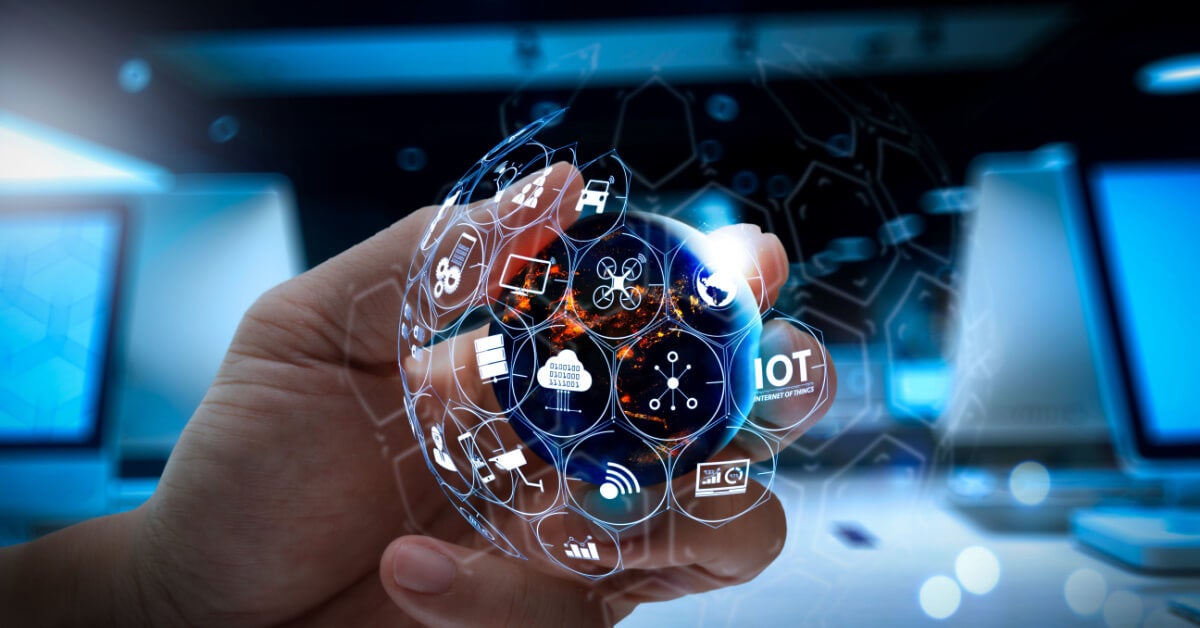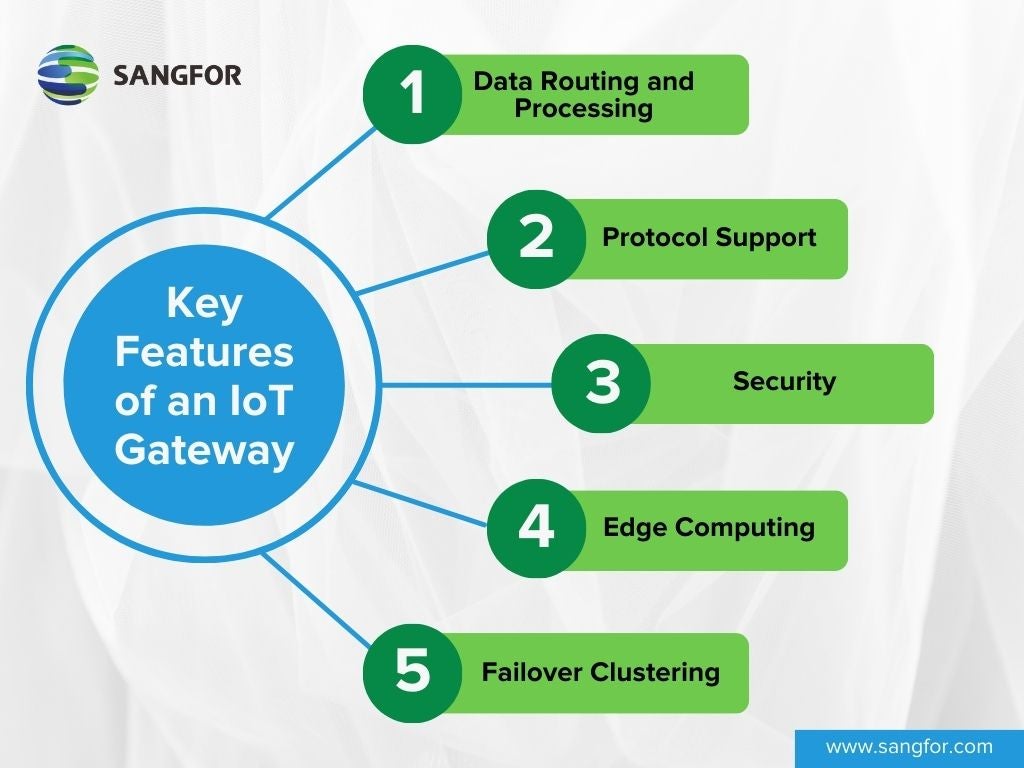Internet of Things (IoT) gateways serve as a crucial link between the Internet and connected devices, enabling communication and management within the IoT ecosystem. Discover the purpose of IoT gateways, their architecture, the benefits they offer, and the challenges they present.
What is an IoT Gateway?
IoT gateways serve as the connection point between the cloud and IoT devices, allowing for data processing, monitoring, and management. The gateway acts as a central hub, routing data between the cloud and IoT devices, and can also perform local data processing to reduce the volume of data that needs to be sent to the cloud.
One of the main purposes of an IoT gateway is to support multiple protocols used by different IoT devices. This allows for seamless communication and data transfer between devices and the cloud. Additionally, IoT gateways can help reduce bandwidth consumption and costs by locally processing and filtering data before sending it to the cloud.

Key Features of an IoT Gateway
An IoT gateway is a crucial component in an IoT ecosystem, serving as the connection point between IoT devices and the cloud. It acts as a central hub, allowing for data processing, monitoring, and management of IoT devices. Some key features of an IoT gateway include
- Data Routing and Processing: An IoT gateway acts as a network router, routing data between IoT devices and the cloud. It can also preprocess data locally at the edge, reducing the volume of data that needs to be sent to the cloud. This can improve response times and reduce network transmission costs.
- Protocol Support: IoT devices use various protocols such as Z-Wave, BACnet, Bluetooth Low Energy, and Zigbee. An IoT gateway must support these protocols to service all the devices in an organization.
- Security: As IoT devices increase an organization's attack surface, IoT gateways play an important role in ensuring security. They can have integrated security functions such as tamper detection, encryption, and hardware random number generation to protect IoT devices from attacks.
- Edge Computing: IoT gateways can also be used for edge computing, where data is processed locally at the edge before being sent to the cloud. This reduces the volume of data sent to the cloud, resulting in cost and bandwidth savings.
- Failover Clustering: Some IoT gateways support failover clustering, which allows for scaling out to support larger workloads. This ensures that the gateway can handle large amounts of data without becoming overwhelmed.

IOT Gateway Architecture
The layers of IoT gateway architecture typically include the sensor layer, network layer, data preprocessing layer, and cloud analysis layer. These layers of IoT gateway architecture work together to collect, process, and analyze data from IoT devices, and securely transmit it to the cloud for further analysis and actions.
The sensor layer is where IoT devices operate, collecting and transmitting data. This layer is responsible for capturing important data from the physical environment and sending it to the gateway.
After the information is collected, it is sent to the network layer, where the data is aggregated and securely sent to processing systems. This layer is also responsible for routing data between the IoT devices and the cloud.
The information is then sent to the data preprocessing layer, where basic data analytics are done to reduce data volume before sending it to the cloud. This can include deduplication, summarization, and aggregation of data.
Finally, the cloud analysis layer is where more in-depth data analytics is performed. This layer often involves using cloud-based applications and services to analyze the data collected from the IoT devices.
In addition to these layers, some IoT gateways may also have edge computing capabilities. This means that they can process data locally at the edge before sending it to the cloud. This can help reduce data volume and improve response times for critical data.
Benefits of IOT Gateways
IoT gateways are an essential component of any successful IoT network, providing a bridge between the local devices and the internet. They offer many advantages, including increased security, improved connectivity, and enhanced data management.
- Security: As the number of connected devices continues to grow, so does the risk of cyberattacks. IoT gateways act as a barrier, protecting your devices from unauthorized access and potential security breaches. They also offer features such as data encryption and device authentication, making your network more secure.
- Connectivity: IoT gateways act as a central hub, connecting all your devices to the internet and providing a single point of access. This eliminates the need for individual devices to have an internet connection, reducing costs and simplifying network management.
- Data Management: With the ability to collect, analyze, and store data from multiple devices, IoT gateways offer a comprehensive view of your network. This allows for more efficient data processing and better decision-making. IoT gateways can also perform data filtering and aggregation, reducing the amount of data that needs to be transmitted to the cloud, resulting in cost savings.
- Enhance Functionality: IoT gateways can act as a local processing unit, allowing for real-time data analysis and decision-making at the edge of the network. This reduces the latency and bandwidth requirements for sending data to the cloud, making your network more efficient.
Implementation Challenges
While an IoT gateway can bring benefits to your organization, implementing one can also present several challenges. These challenges involve both technical and security considerations.
- Integration and Complexity: One challenge is the complexity of integrating multiple IoT devices and sensors from different vendors. This can create communication issues and compatibility problems. IoT gateways must be able to translate between different protocols and data formats to ensure smooth communication between devices.
- Management and Maintenance: With numerous IoT devices connected to the gateway, it can become difficult to keep track of all the devices and ensure they are functioning properly. This can also lead to issues with firmware updates and security patches, making it crucial to have a comprehensive management system in place.
- Security: Your IoT devices are often connected to the internet and can be vulnerable to cyber attacks. It is important to have strong security measures in place for your gateway to protect against potential threats and to regularly update and monitor these systems.
- Scalability and Flexibility: As the number of connected devices and the amount of data they generate increases, it is important for your gateway to be able to handle this growth without impacting performance. Additionally, as new IoT devices are added to the network, the gateway must be flexible enough to accommodate them.
- Edge Computing Capabilities: As more data is generated by IoT devices, it can become difficult to process and transmit all of it to the cloud. Your IoT gateway must have the ability to perform data preprocessing and filtering at the edge to reduce the amount of data being transmitted and improve overall efficiency.
- Cost and Return on Investment: IoT gateways and their devices can be expensive, therefore your organization must carefully consider the potential benefits and returns before investing in them. Additionally, ongoing maintenance and management costs must also be factored in.
Consider Sangfor Internet Access Gateway
Ultimately, an IoT gateway serves as a communication link between IoT devices and the cloud, providing essential features such as data routing, security, and edge computing. To protect your devices, consider Sangfor’s Internet Access Gateway to provide secure internet access by enforcing application control and monitoring their internet usage. This ensures that any malicious or unauthorized activity is blocked, protecting your devices from potential cyber attacks.
